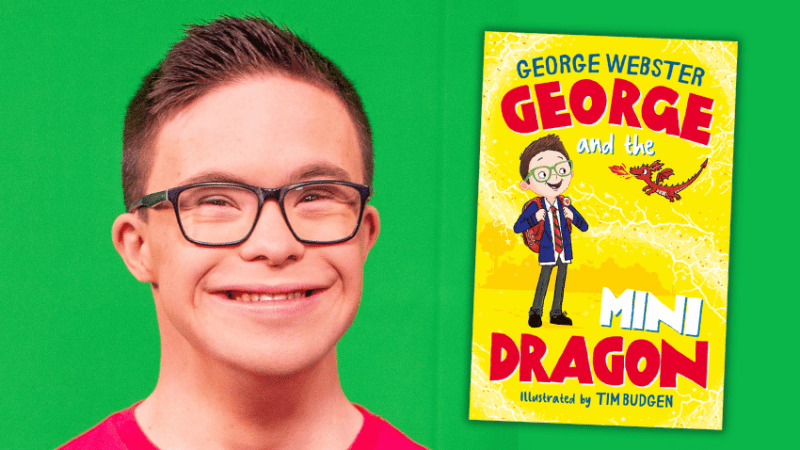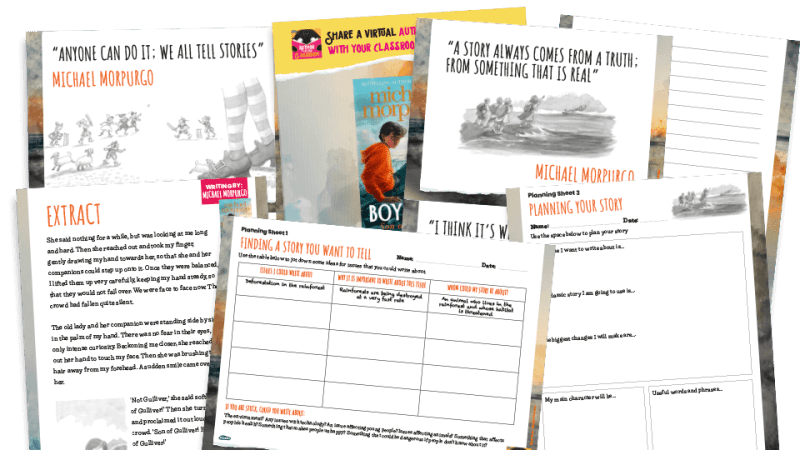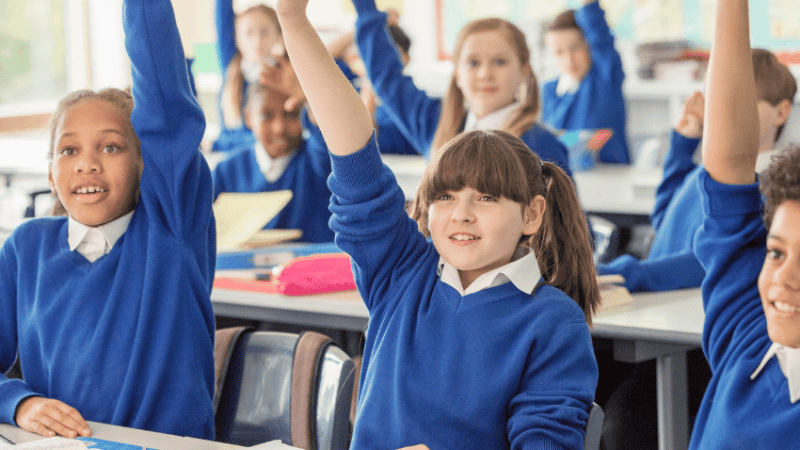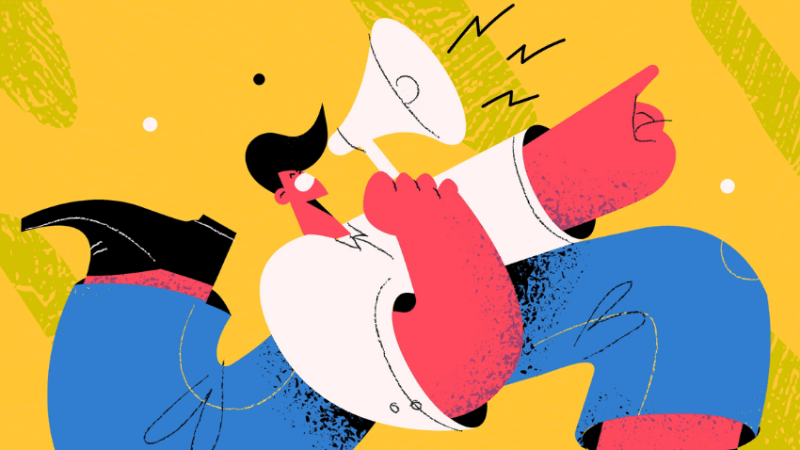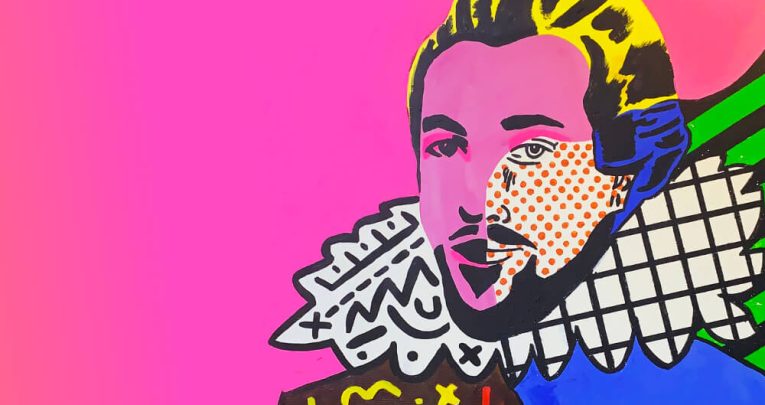10 Books to Teach on Magical Creatures in Primary
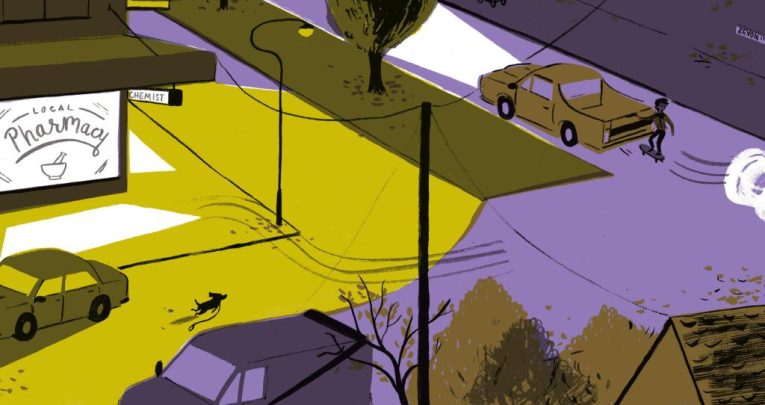
From taking care of unicorns to serenading ogres, these fantastical stories will leave you fizzing with lesson ideas…

- by Carey Fluker Hunt
- Creative learning consultant, writer and former teacher Visit website
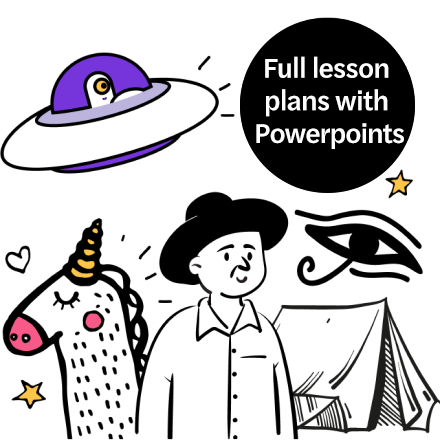
Foundation Stage
1 | A Werewolf Named Oliver James
By Nicholas John Frith (Alison Green Books)
What’s the story?
Suddenly, Oliver James can run faster than a train and leap higher than a building! Could it be something magical is going on? Frith’s retro-inspired illustrations create the mood for this good humoured tale that will set imaginations whirring.
Thinking and talking
How and when does Oliver realise he’s a werewolf? How do other people react to him? What can Oliver do as a werewolf that he couldn’t as a boy? Are werewolves real? Why do people make up scary stories, do you think?
Try this…
- Which superpowers would you choose and why? Imagine you’re using your powers. What does it feel like? What do you do? Draw a picture of yourself and tell the story of what happens.
- Find out about wolves. Where do they live? How do they behave? What do they eat? Make a class display.
- Put on a furry coat and move like a wolf. Can you howl and make wolf noises? As a class, copy the actions of a pack leader and do some whole-pack howling. When should we do as we’re told and be good pack members, and when should we be lone wolves and think for ourselves?
2 | Sophie Johnson, Unicorn Expert
By Morag Hood and Ella Okstad (Simon and Schuster)
What’s the story?
Sophie knows all about unicorns and likes to tell her toys exactly how to deal with them. So when a real, live unicorn appears and Sophie doesn’t notice, the humour is all the more enjoyable.
Thinking and talking
What does Sophie tell us? What do we learn by looking at the pictures? What makes this story funny, do you think?
What could the unicorn be thinking in each picture? What would he like to say to Sophie and the toys? What do you know a lot about? Share something interesting!
Try this…
- What does a unicorn sound like? What does magic sound like? Use instruments and voices to create unicorn-themed sound effects for this book.
- Make horns like the ones Sophie’s toys are wearing by colouring and assembling cone-shaped templates. Now that you’re unicorns for the day, what will you do? Practise moving like unicorns, then work some magic.
- Play Hunt the Unicorn by hiding a toy and inviting somebody to find it. Pass the unicorn round and talk about pet care. What does this unicorn need? Design and make a bed, exercise pen, food bowl and other items to help you look after your new pet. Can you write instructions so that everyone knows what to do?
Key Stage 1
3 | There is No Dragon in This Story
By Lou Carter and Deborah Allwright (Bloomsbury)
What’s the story?
The dragon doesn’t like fighting and has gone off in a huff, looking for a better story. The trouble is that nobody wants a dragon in their tale – until the sun goes out and they find his fiery skills are just what they require! This cheerful picturebook plays games with familiar fairy tales and brings readers on board to share the joke.
Thinking and talking
Why is the dragon trying to find a new story? What difficulties does he encounter? What are story-dragons usually like? How does this dragon differ from the stereotype?
Try this…
- How many references to fairy tales can you spot? Make a list and talk about the main events in each. Draw one of the stories as a strip cartoon – like the one at the end of this book. What happens if you mix events and characters from different stories? Draw the result!
- Collect patterned and plain fabrics and papers in sun colours and use to make an enormous sun-ray collage – similar to the one in the book. Talk about sun safety and add informative notes to your display.
- Look at the darkened silhouettes. Investigate using a sheet, a table lamp and a collection of toy characters, then explore their shadows outside on a sunny day.
4 | Ossiri and the Bala Mengro
By Richard O’neill and Katharine Quarmby, Illustrated by Hannah Tolson (child’s play)
What’s the story?
Ossiri wants to be a musician but her Traveller family can’t afford an instrument. Ossiri makes one out of scraps, but trouble arrives in ogre form… Luckily for Ossiri, the Bala Mengro loves her music. But what will happen to the greedy stranger? Co-written by a Romani storyteller, this longer-text picturebook has the flavour of a traditional tale.
Thinking and talking
Can you play an instrument? What does it sound like? What does Ossiri’s Tattin Django sound like? Who likes it and who doesn’t? Why doesn’t Ossiri’s family want her to be a musician?
Try this…
- How many different noises can you make using household objects and scrap? Which materials make the loudest noises? The quietest? The most interesting? Write a report about your discoveries.
- Are your noises music? Explore rhythm and pitch using scrap objects, percussion instruments and Tattin Djangos made from shoeboxes, elastic bands and other materials.
- Can you create noises that sound like an angry Bala Mengro? Can you compose a song he’d like to dance to? Or music to send him to sleep? How would a Bala Mengro move? Add some angry / toe-tapping / sleepy movements to your musical soundscapes to create a performance fit for an ogre!
5 | The Cottingley Fairies
By Ana Sender, (Northsouth Books)
What’s the story?
It’s 1917 and Elsie and Frances are taking photos of themselves playing with fairies in the woods. Is it a hoax, or are they telling the truth? The world can’t decide… This beautifully-illustrated picturebook recounts historical events in an understated narrative, leaving plenty of room for children to question, interpret, imagine and discuss.
Thinking and talking
Spend time exploring the illustrations as well as talking about the story – there are gaps between text and images for your thoughts and feelings, so encourage reflection and questioning.
Did Elsie and Frances really see fairies? Do you think magical creatures exist?
“The adults lived in a very different world… and they were not able to see ours.” What can you say about the adult world depicted in this story?
Try this…
- Go on a woodland expedition, using your senses to explore your surroundings. Record your discoveries on sketchmaps. Create tiny fairy homes using natural found materials together with card and thread. Photograph and use these as starting points for different kinds of writing (reports, descriptions, instructions, stories …).
- “Taking photos is like opening windows…” Collect narrative photos from magazines. Examine and discuss, imagining they’re windows into other worlds and other lives. Choose a photo to describe and write about.
- Research the historical background to this book – early photography, Sir Arthur Conan Doyle, the First World War…
6 | Inside the Villains
By Clotilde Perrin (Gecko Press)
What’s the story?
Three gloriously-outsized cutaways (Wolf, Giant and Witch) invite readers to lift the flaps and see what makes each villain tick. The spreads open gatefold-style to create an 80x40cm canvas featuring a full-length story and first-person ‘factsheet’ alongside each cutaway. A list of archetypal stories is provided for each character and children with a working knowledge of fairy tales will enjoy spotting the many references.
Thinking and talking
What other fairy tale / traditional villains do you know? What did they think, say and do to make us think of them as villains?
Trending
Which characters would you include in a book about heroes? Why?
Try this…
- Create your own lift-the-flap characters inspired by Perrin and drawing on other fairy tales. Or ask children to make lift-the-flap ‘look inside’ figures of themselves.
- Invent quizzes based on the More About Me pages and answer from the point of view of characters from other traditional stories.
- Collect fabric off-cuts, dressing-up clothes, props and craft materials. Pair children and ask them to assemble outfits for fairy tale characters, including props and accessories made from card and other materials. Design informative lift-the-flap cards and attach to each outfit. Ask pairs to model their outfits and introduce them (and their characters) to the class.
Key Stage 2
7 | The Wizards of Once
By Cressida Cowell (Hodder)
What’s the story?
Wizards and warriors have always been enemies, so when the reckless Xar (son of the King Enchanter) meets Wish (determined daughter of the Warrior Queen Sychorax) things are bound to get complicated. This richly imagined storyworld is illustrated throughout with line drawings by the author.
Thinking and talking
Who is disobedient in this book, and how, and when? What happens as a result? Is it good or bad to disobey? Give reasons for your answers. Who’s narrating this story?
List the candidates and make a case for and against each of them.
Try this…
- What does this book tell us about witches? What do you know about witches in traditional stories (Hansel and Gretel, Baba Yaga…) and how do the witches in this book differ from them? Draw a picture of the Kingwitch and label using quotes from the text.
- How is magic described in this book? Imagine your magic has just come in – write a description of what happens and how it feels, or tell the story of how you cast your first spell.
- As a class, write and illustrate a non-fiction-style book about the magical objects, customs, companion creatures and history of the wizards.
8 | The Boy Who Grew Dragons
By Andy Shepherd, Illustrated by Sara Ogilvie (Piccadilly)
What’s the story?
There’s a strange plant in Grandad’s garden. Tomas can’t believe his eyes when a tiny dragon hatches out of it – but things really hot up when he takes his new pet to school! This warm-hearted story is illustrated throughout with line drawings by Sara Ogilvie.
Thinking and talking
Have you cared for a pet? What do pets need? What would you do if you had a pet dragon?
Do you think Tomas handles the situations in this story well? Would you have advised him to act differently? Discuss.
Try this…
- Do some library-based research like Tomas, then write and illustrate your own World Guide to Dragons.
- Investigate a selection of fruit, including lesser-known varieties. What do they feel and smell like? What can you hear when you tap or shake them? How heavy are they? Do they remind you of anything? Use pencils, pastels and other media to draw them. Cut and taste them, then draw their cross-sections. Write about what you’ve observed and discovered.
- Imagine a magical creature is hatching from one of these fruits. What does it look like? Draw and name your creature. Tell the story of what happens when you take it to school.
9 | Arthur and the Golden Rope
By Joe Todd-Stanton (Flying eye)
What’s the story?
To defeat Fenrir the giant wolf, Arthur Brownstone must sail to the land of the Norse Gods to collect the footfall of a cat and the roots of mountain – and to do that he’s going to need the help of all the magical objects he can find!
Framed by a story about the Brownstone vault and its collection of ancient artefacts, this is the first in a series of mythical adventures told graphic-novel-style.
Thinking and talking
What non-magical skills does Arthur have (imagination, determination, resourcefulness…) and how do they help him succeed? What did you already know about the Norse myths? What has this book taught you? From Thor’s accounts of Fenrir’s past attacks to the Professor’s references to other Brownstones, this book is bursting with stories waiting to be told. How many can you find? Which would you like to hear next, and why? Tell them!
Try this…
- Make a collection of unusual objects and handle them. Imagine they’re magical: what are they called and what can they do? Create a museum featuring your artefacts, complete with labels identifying each item and a catalogue containing further information.
- The rope Arthur uses to capture Fenrir is made from two rare (and poetic-sounding) ingredients. As a class, list similarly intriguing ingredients, then make a lucky dip by writing them on cards.
What magical item could be created by throwing two randomly-drawn ingredients into a cauldron? Write about how you collected your ingredients and what happened when you cast your spell.
10 | Fantastic Beasts and Where to Find Them
By JK Rowling and olivia Lomenech Gill (Bloomsbury)
What’s the story?
This large-format edition of Newt Scamander’s guide to the magical beasts of the Harry Potter universe features a host of realistically illustrated creatures from the spidery Acromantula to the shaggy Yeti, via 10 breeds of dragon.
Olivia Lomenech Gill is known for her sensitive, painterly depictions of natural history and landscapes, and her beautiful illustrations give this book a gravitas and authenticity that play well alongside JK Rowling’s imaginative text.
Thinking and talking
Which of these creatures had you heard of before reading this book and which were new to you?
If you could spend a day as a Fantastic Beast, which would you be and why?
Try this…
- Can you link any of these creatures to events that happen in the Harry Potter books? What about other stories featuring these creatures, such as myths and folktales? As a class, create a mind map showing the creatures, the stories in which they feature and the relationships you notice between them.
- Invent a new magical creature. Write a Newt-Scamander-style account of it, illustrate your report and bind to form a class reference book. Model your creatures from plasticine or modroc and display inside a magic-proof case.
- These creatures don’t exist, but Gill’s beasts look as though she’s drawn them from life. How has she achieved this? Can you identify the elements each magical creature owes to the real world? (bat-style wings, birds legs…) Look closely at Gill’s artwork and try out techniques she’s used, such as watercolour washes. Observe animals or birds and discuss what you can see and how to capture it. Sketch using pencils, graphite and charcoal together with dip pens, brushes, inks and watercolours.
Carey Fluker Hunt is a freelance writer, children’s book ambassador and creative consultant.


